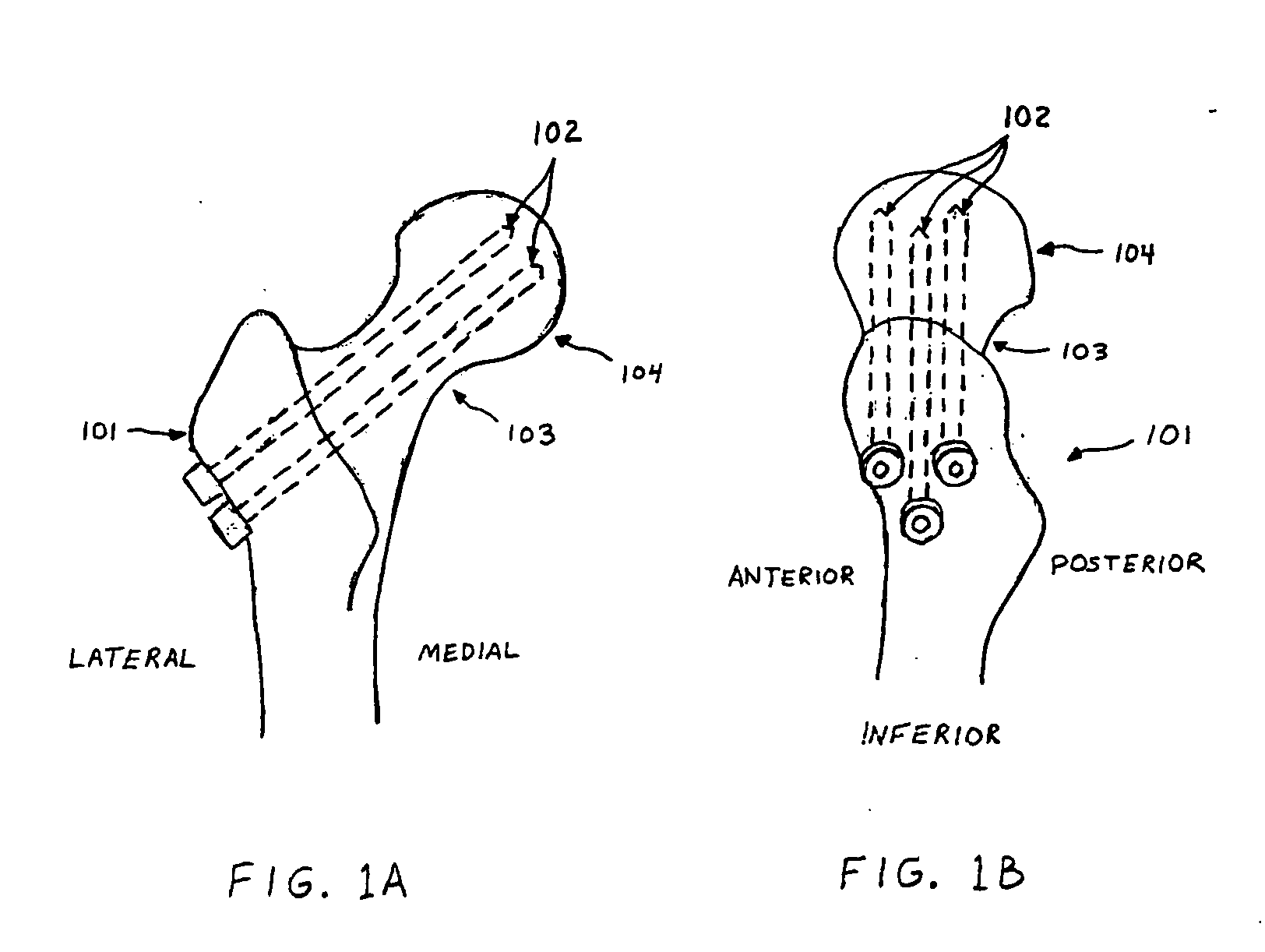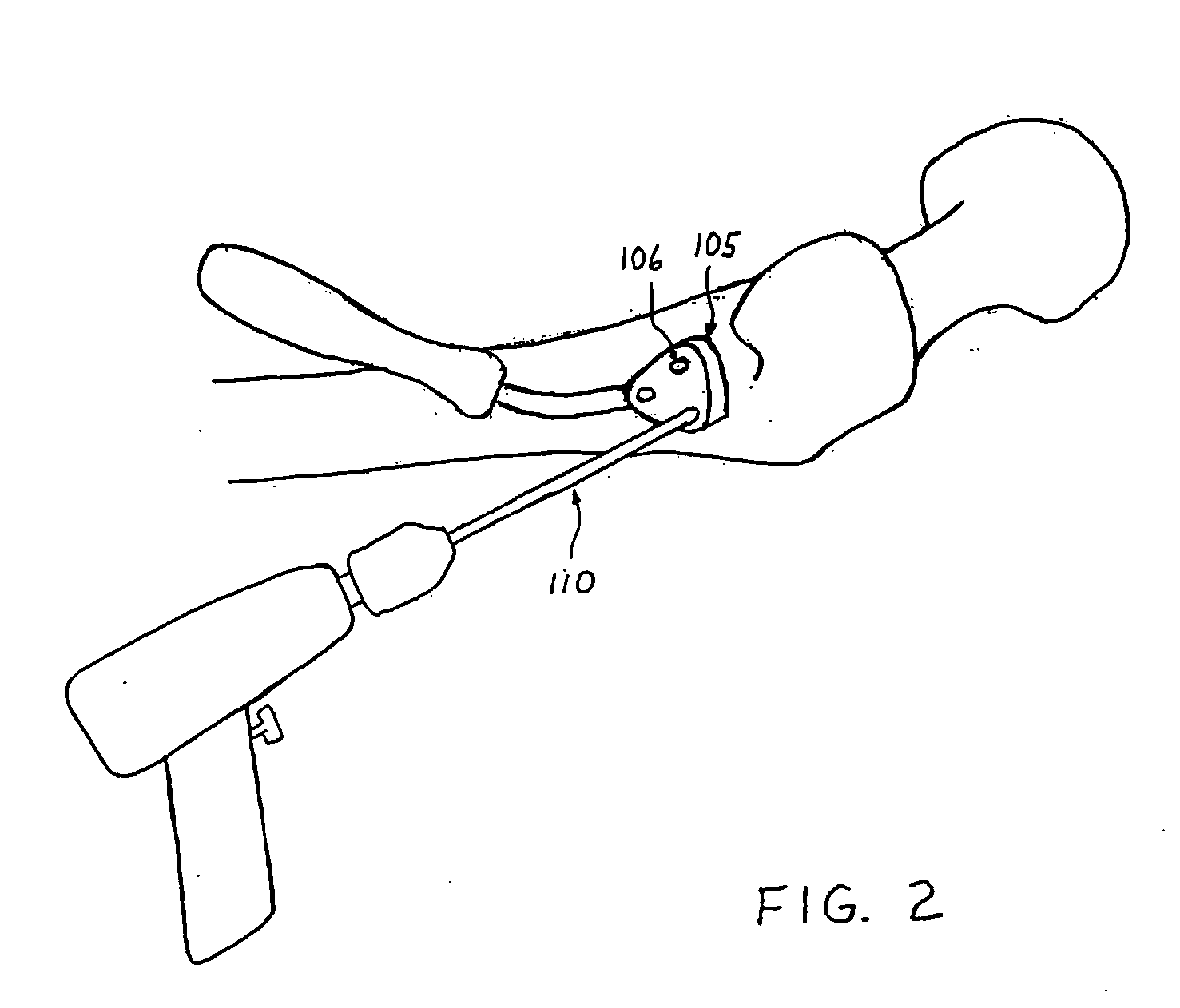Enhanced graphic features for computer assisted surgery system
a computer assisted surgery and enhanced technology, applied in the field of enhanced graphics capabilities of computer assisted surgery systems, can solve the problems of difficult to accurately predict the placement of the final guide pin, difficult to achieve the desired triangular spacing and optimal placement of the guide pin in the femoral neck, and t permit the surgeon much flexibility to modify the preset pattern, etc., to achieve the effect of improving the function of the instrument, promoting simple instruments, and sufficiently simulating
- Summary
- Abstract
- Description
- Claims
- Application Information
AI Technical Summary
Benefits of technology
Problems solved by technology
Method used
Image
Examples
Embodiment Construction
[0030] Current surgical practice for the treatment of a femoral neck fracture is the insertion of three cannulated screws through a small incision on the lateral (side) aspect of the hip. As shown in FIG. 1A, the screws (102) are inserted from the lateral aspect of the trochanteric area of the femur (101) through the femoral neck (103) and into the femoral head (104) in a roughly parallel manner. When observed from a lateral view, FIG. 1B, the screws describe the vertices of a triangle with one screw placed inferiorly (toward the knee), one placed anteriorly (toward the front) and one placed posteriorly (toward the back).
[0031] The first step of the procedure, shown in FIG. 2, is the insertion of three guide pins (110) under fluoroscopic guidance. Numerous x-ray images involving frequent reorientation of the fluoroscope are required to monitor the progress of the guide pin insertion in both AP (front-to-back) and lateral (side) views. A drill guide (105) with three or more holes (1...
PUM
 Login to View More
Login to View More Abstract
Description
Claims
Application Information
 Login to View More
Login to View More - R&D
- Intellectual Property
- Life Sciences
- Materials
- Tech Scout
- Unparalleled Data Quality
- Higher Quality Content
- 60% Fewer Hallucinations
Browse by: Latest US Patents, China's latest patents, Technical Efficacy Thesaurus, Application Domain, Technology Topic, Popular Technical Reports.
© 2025 PatSnap. All rights reserved.Legal|Privacy policy|Modern Slavery Act Transparency Statement|Sitemap|About US| Contact US: help@patsnap.com



